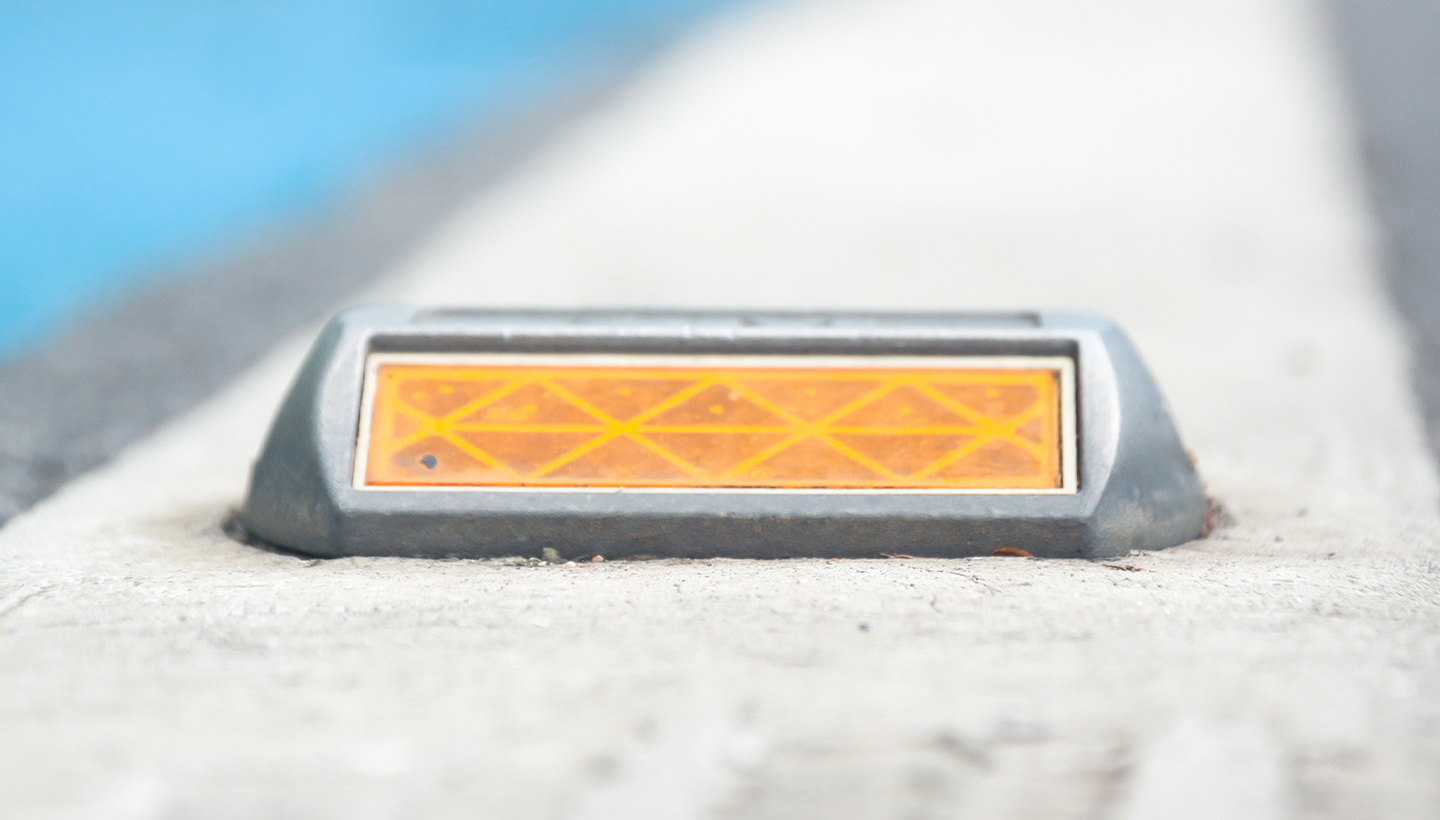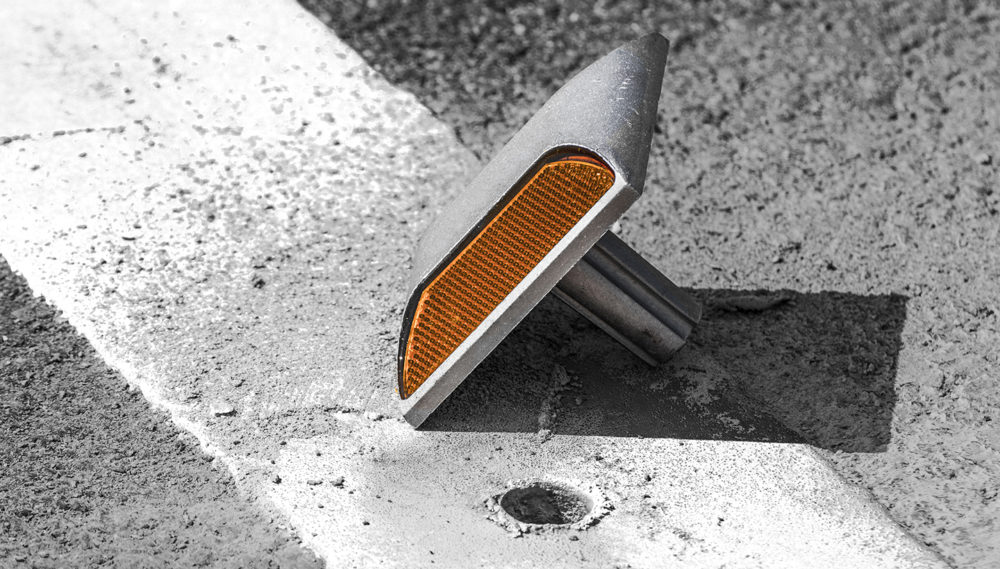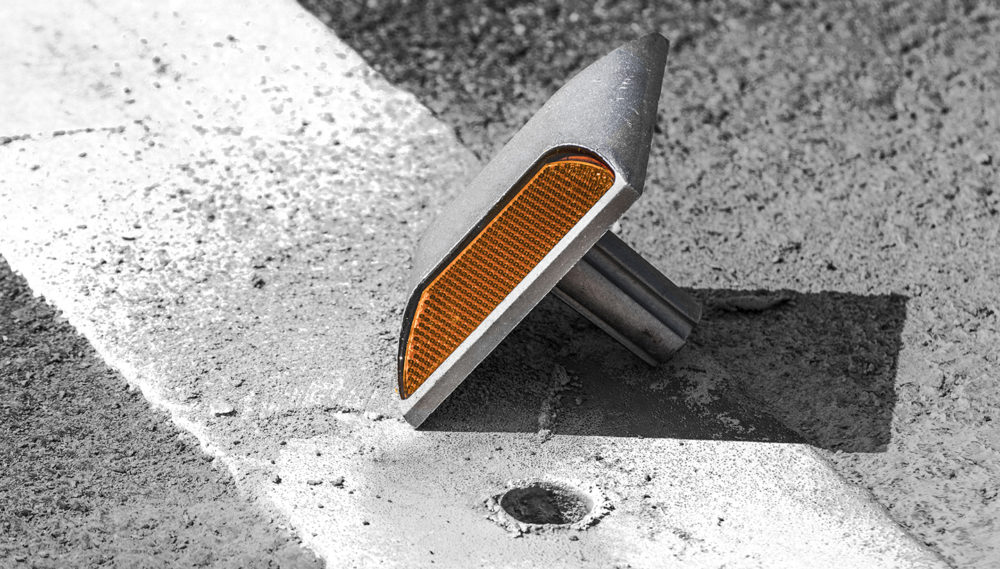Road Studs: Definition, Function and Size
23 January, 2024

Driving on the highway, sometimes you accidentally run over a bump on the road markings. These lumps are usually made of glass or iron, which can reflect light.
Called road spikes or road studs, these lumps are usually placed on road markings, both in the middle and on the side of the road. However, it is not uncommon for riders who run over these bumps to sometimes slip, especially motorcycle riders.
Therefore, drivers must be careful not to drive too far in the middle or on the edge of the road markings so as not to run over the road spikes. To understand more about road spikes or road studs, let’s look at the explanation below.
Understanding Road Studs or Road Studs
Usually placed on asphalt and between road dividers, These road spikes, or road studs, have a square and protruding shape. Having reflectors that are powered by batteries or solar power makes road studs more energy efficient and doesn’t require a lot of electricity.
Road studs are strong enough to withstand loads of up to tons when used on asphalt. Because of the aluminum alloy material used in the casing, road studs are more durable. Apart from that, the reflector uses special beads that are shatterproof, anti-fading, and able to reflect light.
Ministerial Decree Number KM 60 of 1993 concerning road markings regulates the use of road studs on highways. These road spikes have the ability to replace lines on the road surface because they can become visible road dividing lines at night or in foggy weather.

Function of Road Spikes
It is a very important tool for road users, especially motorists. Road spikes function as reflectors for road markings, especially at night or in quite bad weather, such as heavy rain.
Usually, when driving in rain and fog, the visibility of road markings will be impaired. The presence of these road spikes will reflect light from vehicle lights to road users so they can see road markings, such as lane or lane dividers, more clearly. This can definitely prevent road accidents. Road studs or road spikes can reflect light in any condition, whether dry or wet.
Color Variations in Road Spikes
There are three colors for road spikes, namely red, yellow, and white. Each color has a specific purpose. Yellow reflectors separate traffic lanes. Road studs with red reflectors are installed on the boundary line on the side of the road, while road spikes with white reflectors are installed on the boundary line on the right side of the road.
Road Spike Size
The size and material of road nails refer to Ministerial Decree Number: KM 60 of 1993 concerning Road Markings. Road spikes made from aluminum alloy come in three shapes and sizes. There are three types of road spikes:
- Square shaped with a length of 100 mm, width 100 mm and thickness 20 mm, used on roads with design speeds of less than 60 km per hour.
- Rectangular in shape with a length of 100 mm, width of 150 mm and thickness of 20 mm, used on roads with a design speed of 60 km per hour or more.
- It is round with an outer circle diameter of 100 mm, convex diameter of 60 mm, and thickness of 19 mm.
Road studs must be no more than 15 mm above the road surface so as not to interfere with road users; road studs with reflectors can reach 40 mm above the road surface.
Placement of Road Spikes
In terms of placement, these road spikes have their respective places. Here’s the placement of the road spikes:
- Edge of the traffic lane
- Longitudinal markings in the form of dotted lines as a warning sign.
- Road axes as lane separators.
- Longitudinal markings in the form of solid lines to separate bus lanes.
- The symbol markings are in the form of chevrons.
- Traffic island
How to Install Road Spikes
This is how road spikes are installed on the highway:
- When the road spikes are installed, the road section will be drilled with a special drilling tool to a depth appropriate to the size of the road spikes.
- After drilling, the nail is inserted by smearing special adhesive glue on the bottom of the nail and the bottom of the nail body.
- After that, the inserted nails are left for about fifteen minutes for the hardening process, which makes the nails stronger on the road surface.
- Road spikes installed on dotted longitudinal markings have a repetition distance of 3 to 5 meters from the beginning to the end of the markings, while road spikes installed on solid markings have a repetition distance of every 3 meters.
After reading the explanation above regarding road spikes, also called road studs, it will definitely give you more or less understanding. Always be careful when driving and turn on the lights when it rains or in bad weather so that your vision is better and you can reflect the light from the road spikes to see the lines of the road.




